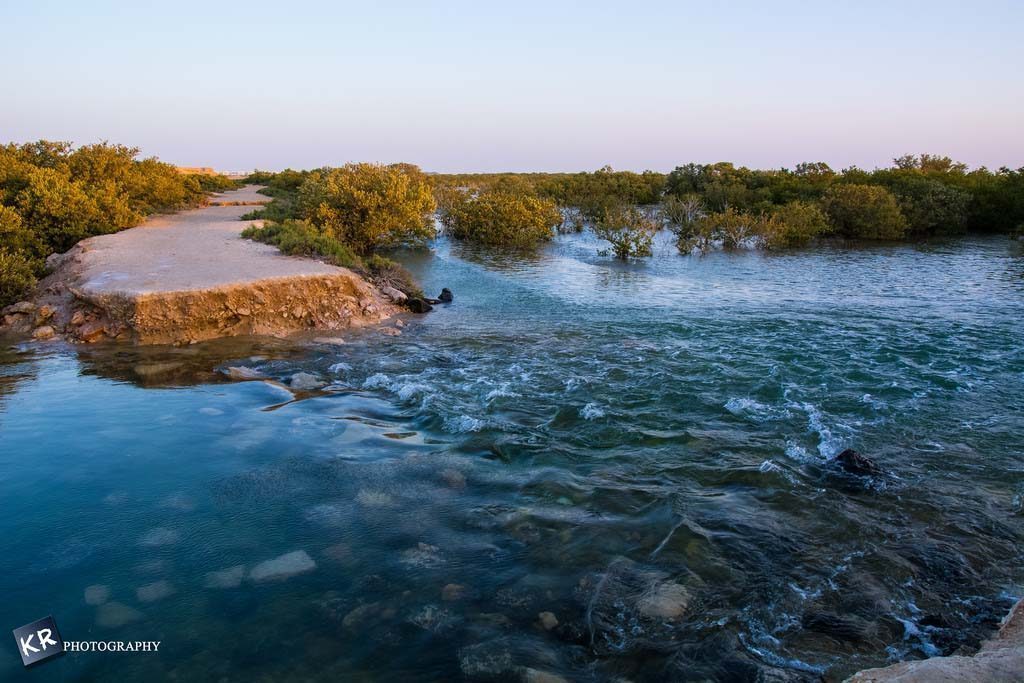Mangrove ecosystems store significant amounts of carbon in the soil, leaves, and branches, significantly tackling carbon emissions.
In a hopeful step toward a greener future, the Gulf nation’s authorities have been successful in almost doubling the number of mangroves along the country’s shores, taking 9kms of green land to 14kms in less than three years.
In comparison to global forest loss, the rate at which coastal mangrove forests are disappearing is three to five times higher. For that reason, over the last decade, and as part of Qatar’s green strategy, the environment ministry has been working relentlessly to protect, grow and develop mangrove forests and the surroundings around them.
Following its original restriction to the Al Khor and Al Thakhira sectors, the Ministry of Environment and Climate Change has now planted mangroves in four locations along the northern and eastern coast.
Mangroves are currently growing in numerous locations over vast stretches of land that are thought to be thousands of hectares in size. Success has been achieved in mangrove farming in Al Ruwais, Umm Al Houl, Fuwairit, and Ras Matbakh.
In 2014, more than 23% of the nation’s total area was set aside as nature reserves, which totaled up to 12 natural reserves; They included Al Ariq, Al Thakhira, Khor Al Adeed, Riffa, Umm Al Amad, Umm Qarn, Al Sani’, Al Reem, Al Sheehaniya, Al Mashabiya, Al Wasail, and Wadi Sultana.
The Khor Al Udeid Reserve, which comprises 1,293 square kilometres, or 47% of all wildlife reserves in Qatar, is the biggest in size. With an area of 540 square kilometres or 75% of the total maritime reserves, it is regarded as the greatest marine protected area.
Qatar’s ‘green fortress’
Mangrove forests are a crucial component in tackling climate change, and their extinction could have serious social and economic repercussions, thus authorities in Qatar are eager to conserve, preserve, and work on mangrove development.
Al Khor and Al Thakhira are two of the most noticeable regions where mangroves are abundantly planted. Within its waters, the trees cover an area of more than seven square kilometers and grow as high as four meters.
In the heart of the surrounding desert, Al Thakhira’s mangrove or mangrove forests are dispersed over a wide region and teeming with native vegetation. The Al Thakhira region, which has mangrove forests, is regarded as a wildlife reserve by Law No. 6 of 2006.
Mangrove trees that grow on seawater are present year-round in the region, which is around 64 kilometers from Doha. When submerged in extremely salty seawater, mangroves may breathe, grow, and transform the salty water into fresh water that they can consume.
Importance in ecosystem
Highly effective carbon sinks, mangrove ecosystems store significant amounts of carbon in the soil, leaves, and branches. 3,754 tonnes of carbon may be kept in one hectare of mangroves.
The forests are a unique and magnificent natural part that separates the land from the sea and are teeming with species. They significantly contribute to lowering global warming by producing oxygen, absorbing harmful chemicals, and removing carbon dioxide.
The plants are thought of as a fortress for the reproduction of many fish, some of which are of economic importance in Qatar, like Badah, and whose seedlings range in length from 44 cm to 60 cm. Mangroves also work to stabilise the soil, protect beaches from erosion, and improve conditions for increasing fish stocks.
Many different kinds of marine animals, including fish, shrimp, algae, crabs, fungi, worms, and others, are thought to thrive in such environments.
Mangroves offer a variety of advantages, including the use of their sturdy stems for building, cooking, and heating, as well as for many other wood-based enterprises, including the construction of boats. They may thrive in salt water because their roots include glands that filter the salty water before removing any more moisture from the leaves.
Not only that, but the area also prevents soil erosion on coastlines, absorbs eight times as much carbon dioxide as rainforests, and lessens the intensity of storm surges.
Coastal mangrove trees make up a unique ecosystem and offer a variety of environmental services. They are rare despite their presence in 123 regions in the world, including Qatar, as they represent approximately 1% of tropical forests around the world and no more than 0.4% of the totality of forests in general.
The trees create a natural barrier that slows erosion, mellows waves (and tsunamis), and slows storm-related sea level rise. They can also lessen the damage caused by natural disasters, increasing resistance to climate change and its impacts.
The soil of mangrove forests is primarily rich in carbon sinks, which sequester significant amounts of carbon over thousands of years.







